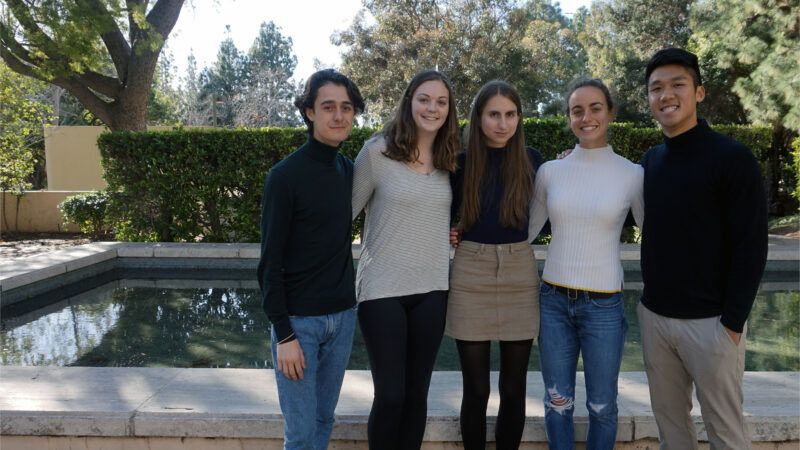
Zero Waste Blog Post: May 10, 2019
Sorting Out the Confusion!
By: Natasha Oviedo, Malcolm Au, Kate Zeile, Gustav Fiere, and Elizabeth Tanner.
For the past two weeks the Zero-Waste team has been tabling in front of the Young Research Library as part of our campaign to educate Charles E. Young Research Library users on how to properly dispose of waste and develop more sustainable habits. A lot of the people who came by our table already had a small interest or curiosity in sustainability but still had questions about properly disposing their waste. Since even students who cared and had some background knowledge on sustainability were confused about how they should dispose of their waste, we realized just how important education is to helping our campus and buildings become zero-waste. Many people who came by were surprised at the extent of waste produced at YRL including the amount of that waste that could be diverted. By publicly sharing our waste audit data in front of YRL through colorful and easy to read graphs and displays, library users were able to easily visualize and understand the impact of their waste regardless of their interest or background on sustainability.
One of our first outreach methods included handing out small flyers with guides explaining which waste goes to compost, landfill, or recycling. After a library user commented on the irony of a zero-waste group flyering and discussing our own hesitations about this method our team member Gustav decided to try a different approach. Once we only had one flyer left Gustav grabbed the flyer and approached people entering and leaving YRL asking, “Would you like to take a picture of our flyer?” People often looked surprised that they were not being handed the flyer but appreciated the sustainable route we took and the fact that by having the picture saved on their phone it will now be easier for them to access. Many zero-waste methods can seem unconventional at first, which is why it was important for our team to try a different method in the hopes that soon the sustainable way becomes the normal way.
While our team has run into roadblocks regarding our posters and campaign, tabling allowed us to communicate in person with different library users including undergraduate and graduate students, prospective students, librarians, custodian staff, and even visiting students from other campuses. Our interactions allowed us to understand what aspects of waste are important to people, concerns library staff and custodians have about the current infrastructure available on campus for waste disposal, and what about waste disposal confuses people.
